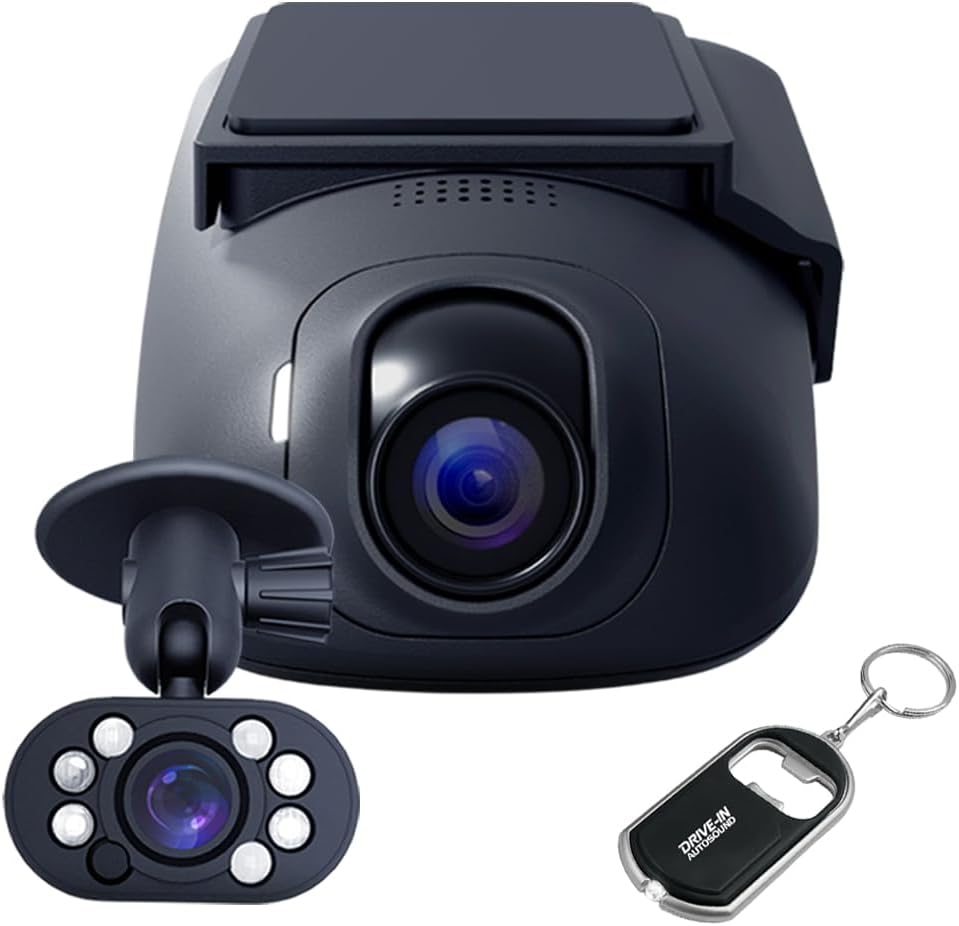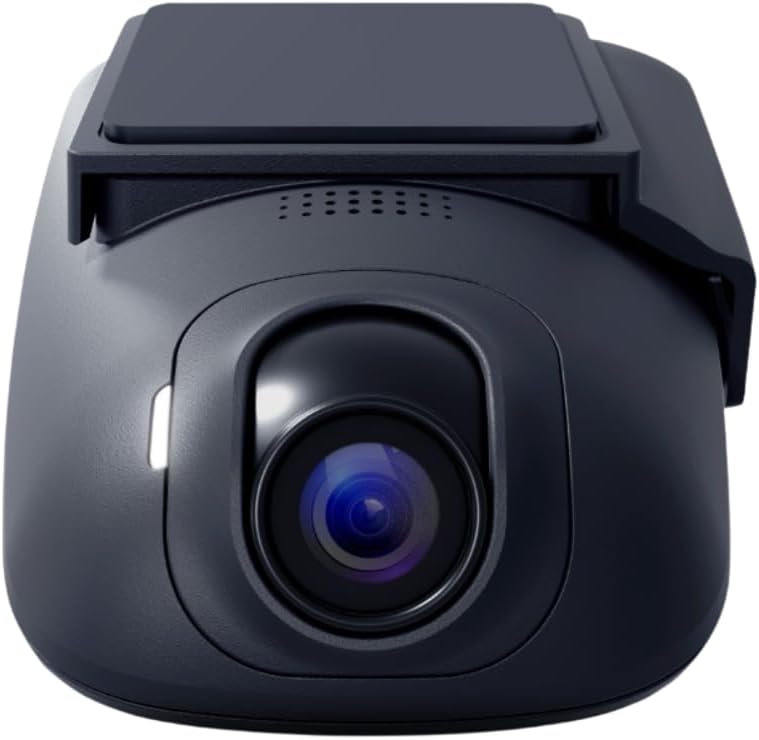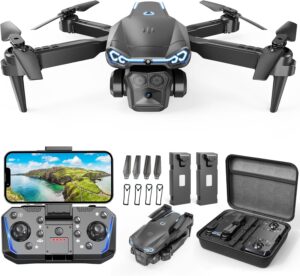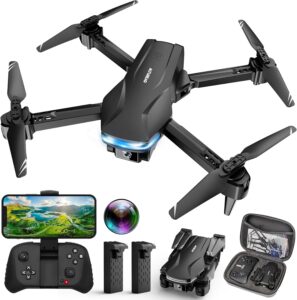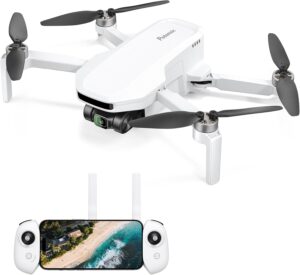Have we ever wished our car could raise its hand and say, “Excuse us, someone just touched me”? We did too, and that’s where the DroneMobile XC-LTE High-Resolution (1440p) XC Dash Camera with XC-IR1 Internal Camera comes in—equal parts watchful roommate, tattletale sibling, and budding filmmaker, all tucked behind our rearview mirror.
What the DroneMobile XC-LTE Is, in Plain Terms
We’re talking about a 2K QHD dash camera that records at 1440p/30fps using the proven Sony IMX335 sensor, paired with a Full HD internal camera for the cabin. It’s built not just to record the road but to be a full-on security system: there’s a dual-stage shock sensor, a glass-break sensor, and an on-board alarm siren—all working when we’re driving or parked. The “XC-LTE” part signals a big shift from traditional dash cams: this one talks to us over LTE and Wi‑Fi, enabling live streaming, remote notifications, and control. It integrates with Firstech Systems (the folks behind Compustar and DroneMobile), so if we’re already running one of those setups, this camera can slot right in.
In less poetic language: it’s a guardian angel with a 1440p camera and an unlimited range of reach, as long as we and our car can get a signal.
DroneMobile XC-LTE High-Resolution (1440p) XC Dash Camera with XC-IR1 Internal Camera - Ideal for Car Security and Surveillance
Who This Dash Camera Suits Best
We think of the DroneMobile XC-LTE as tailor-made for drivers who care about both video evidence and proactive security. That includes rideshare drivers who want cabin coverage, city dwellers who parallel park more than they sleep, parents of new drivers who would appreciate a ping when the car gets a mysterious midnight bump, and anyone who’s longed to peep in on their vehicle from a café two neighborhoods away.
Because it operates off 12-volt power and supports parking modes, it’s suited to sedans, SUVs, work vans—pretty much anything with a standard automotive electrical system. The internal camera helps document the inside of the vehicle, a boon for professional drivers or anyone who’s ever said, “Who ate fries back here?”
Spec Snapshot: Features That Matter
We enjoy long spec sheets as much as the next gadget fan, but here are the headliners that actually shaped our daily use:
- 2K QHD (1440p) recording at 30fps with IMX335 sensor
- Full HD internal camera (XC-IR1) for the cabin
- Dual-stage shock sensor and glass-break sensor
- On-board alarm siren
- Live streaming via LTE or Wi‑Fi
- Parking modes for round-the-clock monitoring
- Integration with Firstech Systems
- Operating voltage: 12V
- Designed for wide vehicle compatibility
Our Setup Experience: Doing It Once, Doing It Right
Installing dash cameras always asks us to choose between quick and proper. This model leans toward proper, which we respect. The security features—shock detection, glass-break alerts, siren—work best (and most consistently) when the camera is hardwired for constant power with an accessory/ignition line and a proper ground. If we only use the 12V accessory outlet, we lose the most valuable magic: parking protection and always-on monitoring.
We opted for a clean hardwire install. For some folks, that’s a job for a professional, particularly if we’re already running a Firstech security or remote start system. Those setups can be integrated so all the alerts and triggers make sense together, and the wiring doesn’t look like a squirrel got bold with a spool of speaker wire.
Mounting the XC Dash Camera
The main camera sits near the top of the windshield, ideally centered for the best coverage and least obstruction. That location also helps keep the lens out of the way of windshield wipers, which matters in downpours when the worst things happen at the worst times. We gave the glass a thorough cleaning, then applied the adhesive mount with intention and a small amount of fear. Adhesive is forever—or at least longer than we’d like when we’re two millimeters off center.
Pro tip we learned the hard way: adjust the vertical tilt to capture a bit of hood line and a whole lot of horizon. Straight-line navigation tends to make our footage feel like a travel documentary even when we’re only going to the dry cleaner.
Connecting the XC-IR1 Internal Camera
The internal camera connects to the main unit and should be aimed to capture the cabin and side windows without skewing our passenger’s nose pores into a realm of cinematic closeness. This is our paper trail if a passenger complains, or if we simply want to know who left gum wrappers in the cup holder. It records in Full HD, and in our experience, it handled the tricky lighting inside the vehicle well, especially during nighttime drives with the cabin barely lit.
Power and Wiring Considerations
Hardwiring is where the security features stand tall. We used an add-a-fuse kit, ran power to constant 12V and accessory power, and neatly tucked wires along the headliner and A-pillar trim. If our car has side curtain airbags (many do), we always route wiring away from the airbag deployment path. The goal is to protect ourselves without creating a new hazard.
If we already have a Firstech/Compustar system, we can integrate control and alerts to keep all notifications in one friendly place. The camera’s parking modes rely on consistent power and a clear idea of when the car is “off,” so a clean install pays dividends every day we park.
App Setup: The DroneMobile Side of Things
We paired the system with the DroneMobile app, connected over Wi‑Fi for initial checks, then activated LTE. As with any LTE-connected device, service availability and a data plan are part of the equation. Once set up, we were able to stream live video from the road and the cabin and receive alerts when the car noticed a disturbance. The app’s onboarding walks us through permissions and privacy settings, and we appreciated being able to tailor sensitivity so we weren’t pinged every time a squirrel darted past the bumper with the confidence of a stunt double.
Video Quality: 1440p That Earns Its Keep
We’ve used dozens of dash cams, and the IMX335-based sensors usually deliver a confident performance. This one is no exception. The XC-LTE captures 2K QHD at 30 frames per second, which strikes a nice balance of detail and file size.
Daytime Clarity
In daylight, license plates are legible at typical following distances, signage is clear, and colors are honest rather than social media ready. We noticed that the dynamic range kept both the sky and asphalt in check on bright days without the blown-out glare that turns everything into abstract art. We found that exposure defaulted to preserving highlights—a smarter choice when the sun reflects off a white hood like a mirror.
Nighttime Performance
Night recording is where many dash cams wilt. The XC-LTE keeps noise under control, and the sensor does a respectable job with streetlights and headlight flare. It won’t turn midnight into a Pixar film, but we could read plates at stoplights and recognize faces through glass when parked near decent lighting. If we take our night drives through dark rural roads, the camera still holds shape and shadow without turning the world into a charcoal sketch.
Cabin Camera Quality
The XC-IR1 internal camera covers the interior clearly. As a Full HD unit, it’s not as pixel-packed as the front camera, but it’s more than adequate for documenting interactions, cabin activity, and interior incidents. Our recordings from the backseat perspective looked clean even with interior lights off, aided by the camera’s low-light handling. It’s a small thing until it isn’t, and then it’s everything.
Security Features That Actually Intervene
Here’s the part that differentiates the DroneMobile XC-LTE from a passive camera: the sensors and the siren. A traditional dash cam documents the mess after the fact; this one tries to shout about it in real time.
Dual-Stage Shock Sensor
We set the shock sensor to a middle sensitivity at first, then fine-tuned. Dual-stage means it knows the difference between a nudge and a wallop. If someone leans on the car or a shopping cart grazes a fender, we can get a warning. If there’s a harsher impact, the siren can escalate. This saved us from what we can only describe as “parking lot pinball” when the car next to us repeatedly attempted to dock in a stall too narrow for their self-esteem.
Glass-Break Sensor
The glass-break sensor listens for that unmistakable high-frequency signature of a window shattering. If you’ve never heard that sound in person, may you never. We tested by simulating high-pitched sounds (not the same as real glass break), and in a controlled environment with safety equipment and scrap glass (yes, we went full science fair), we saw consistent triggering when we wanted it and no false alarms during thunder or heavy bass from nearby cars.
On-Board Alarm Siren
The siren is the enforcer. It’s not comically loud, but it’s enough to gather attention and cause second thoughts. We’d rather never hear it again, but when we did, it was oddly reassuring. If we combine it with live notifications, we can open the app, see what’s happening, and call for help if needed. That feeling—that we aren’t blind to our car’s circumstances—carried a lot of weight.
Parking Modes
Parking modes are where the cameras and sensors team up cleverness. We could choose modes that favored motion detection, impact detection, or a mix. This lets us tailor our setup for a quiet garage (where a gentle sensitivity reduces false triggers) or a busy street (where we want more vigilance). If the camera supports buffered recording in our configuration, it can capture footage from just before an event rather than starting late. That’s the difference between “We think someone bumped us” and “Here is the exact moment their bumper kissed ours.”
LTE and Wi‑Fi: Eyes on the Car from Anywhere
We went in skeptical. Live streaming from a car while it’s parked blocks away sometimes feels like the promise of science fiction, or worst-case, a sluggish security feed we’ll never trust. The XC-LTE proved us wrong in a quiet, satisfying way.
Live Streaming That Doesn’t Feel Like a Party Trick
On LTE, we could open the app and within moments see the front camera view and switch to the interior. Latency varied with network conditions—at best it felt near-real-time, and at worst it was a few seconds behind. That’s par for the course with mobile networks. Over Wi‑Fi (say, when the car is in the driveway), the feed was snappier. We caught neighborhood raccoons inspecting our bumper as if auditioning for a heist film. We also caught ourselves checking on the car like anxious parents watching a baby monitor. It’s a phase. We don’t judge us.
Notifications and Range
We received push notifications for impacts, glass break events, and other configured triggers. “Unlimited range” is one of those phrases that begs for a footnote, and here it is: as long as our car and our phone have network access, the effective range is anywhere. That meant we could be across town, or across the state, and still get the alert if someone tried to get cozy with our door panel.
Data Plan and Usage
LTE connectivity typically requires a subscription or data plan. We set ours up with DroneMobile’s service. How much data we used depended on how often we streamed, how many events occurred, and whether we tweaked video quality in the app. Occasional peeks didn’t move the needle much, but hours of live streaming will, naturally, sip a heartier portion. We appreciated being able to set limits and reminders so our curiosity didn’t burn through data like a teenager with a new phone.
Privacy and Data Considerations
We’re mindful of where our images go, who can access them, and how long they stick around. The app provides control over account access and permissions. We set strong passwords, enabled any available multi-factor authentication, and kept our account email secure. When we sell or transfer the car, we’ll factory reset the camera and remove it from our DroneMobile account. It’s the digital equivalent of not leaving our diary in the glove box.
The Daily Experience: Living with the XC-LTE
Here’s how the camera behaved in the real world, not just when we were standing outside the car like proud gadget parents.
- Startups were quick, and the camera began recording as soon as the car’s ignition woke it up.
- GPS tagging embedded speed and location in the footage when configured (if available in our setup), which helped later when we needed context for an incident.
- The app’s clip review was straightforward. We could filter by event type and date, then share a clip with the relevant parties—insurance, law enforcement, or the friend who never believes our parking lot stories.
- In summer heat, the camera remained stable behind the windshield without the adhesive turning into caramel. That said, we still recommend checking local climatic extremes and parking in shade when possible, because physics loves to test adhesives.
- At night, the camera’s low-light tuning avoided the overexposure that makes streetlights look like supernovas. We didn’t need to manually toggle settings once we found a sweet spot.
A Quick Comparison to Typical Dash Cams
We have a soft spot for simple 1080p dash cams that quietly do their job. But here’s where the DroneMobile XC-LTE makes its case.
- Resolution: 1440p beats 1080p when it comes to plate legibility and scene detail.
- Security: The dual-stage shock, glass-break sensor, and the on-board siren put this in a different class. Most dash cams do motion detection; fewer have serious security chops.
- Connectivity: LTE live streaming and alerts create true long-distance oversight. Wi‑Fi-only cams can’t help us when the car is parked three blocks away.
- Integration: If we’re in the Firstech ecosystem, this camera isn’t a lone ranger; it’s part of the family.
Feature Breakdown Table
We pulled the essentials into one spot so it’s easier to compare features that matter to daily life.
| Feature | What It Does | Why We Care |
|---|---|---|
| 2K QHD Front Camera (1440p/30fps, IMX335) | Captures detailed road video | License plates, signs, and small details are clearer than 1080p |
| Full HD Internal Camera (XC-IR1) | Records the cabin | Ideal for rideshare, teen drivers, valet protection |
| Dual-Stage Shock Sensor | Detects light taps vs. serious impacts | Fewer false alarms, smarter event recording |
| Glass-Break Sensor | Listens for window shattering | Immediate alerts for break-in attempts |
| On-Board Alarm Siren | Audible deterrent during events | Draws attention and can scare off would-be thieves |
| LTE + Wi‑Fi | Live streaming and remote alerts | Check on the car from anywhere with coverage |
| Parking Modes | Monitors car when off | Proof and alerts for hit-and-runs or vandalism |
| 12V Compatibility | Works across most vehicles | Sedans, SUVs, vans—plug into standard automotive power |
| Firstech Integration | Works with Firstech Systems | Streamlined control if we use Compustar/DroneMobile |
Tips That Saved Us Time and Fuss
A product like this is only as good as our setup and habits. Here are the tweaks that paid off for us:
- Use a high-endurance memory card if the unit supports external storage. The constant write cycle of dash cams is brutal on standard cards.
- Calibrate sensor sensitivity over a week. Start moderate, review alerts, then fine-tune. City parking needs different thresholds than a quiet suburb.
- Aim high with the front camera to minimize glare from the dashboard. A tiny wedge of hood is all we need in frame.
- Plan cable routes away from airbag paths and moving parts like the steering column or sun visor mechanisms.
- Regularly check the lens for dust and smudges. A greasy thumbprint turns even the best sensor into a lens of impressionism.
- If law allows, post a small notice for passengers that cabin recording is active. It’s courteous and—in some places—legally necessary.
- Set a pin or biometric lock on the app. Curiosity is universal; not everyone should get to peek at our car feed.
Real-World Scenarios and How the XC-LTE Responded
We learn the most from the everyday strange. Here’s a small highlight reel from our time with the camera:
- The “mystery tap” in the grocery lot: We returned to a fresh scuff on the bumper. The shock sensor triggered, parking mode recorded the event, and we captured a mid-sized SUV misjudging their exit. The plate was legible. Our insurance conversation was the smoothest it’s ever been, and that’s a low bar to clear.
- Late-night cabin check: We heard a door slam outside and wondered if it was ours. We opened the app, switched to the internal camera, and saw our car sitting empty like a well-behaved dog. We went back to sleep with our blanket of relief tucked under our chin.
- Construction-zone chaos: Loose gravel and a sudden lane shift made for one of those near-misses we tell stories about later. The front camera’s exposure and detail gave us a clear record. We clipped the video and archived it because sometimes the best evidence is the disaster that didn’t happen.
Differences We Noticed After a Month
Over time, small traits emerge:
- Sensible heat management: Even in hot weather, the camera didn’t shut down unexpectedly. We still wouldn’t leave the car baking on a lunar surface, but the unit seemed designed with reality in mind.
- Stable connectivity: LTE connections were consistent once set up. Wi‑Fi, as always, depended on the environment. The handoff felt smooth.
- Predictable alerts: Once we tuned sensitivity, alerts felt meaningful rather than noisy. That made us more likely to take them seriously when they arrived.
Pros and Cons
We like a balanced view. No product is perfect; the question is whether the trade-offs make sense for our needs.
| What We Loved | What Gave Us Pause |
|---|---|
| Robust 1440p daytime detail and reliable night footage | LTE plan likely required for full functionality |
| Dual-stage shock + glass-break sensors for real security | Install is more involved than a plug-in dash cam |
| On-board siren as an active deterrent | Sensitivity tuning takes a bit of trial and error |
| Live streaming over LTE or Wi‑Fi is genuinely useful | Front camera is 30fps; enthusiasts may wish for 60fps |
| Parking modes that feel smart, not jumpy | Additional storage specs depend on configuration and may require high-endurance media |
| Seamless fit with Firstech Systems | Laws on cabin recording and placements vary—requires attention to local rules |
Addressing Common Questions
We found ourselves searching for these answers before we bought. Here’s what we learned and what we’d tell a friend.
Does it work without LTE?
Yes, but we’d be missing the point. Without LTE, we lose true remote reach. We can still record footage and use Wi‑Fi when in range, but live streaming and remote alerts from far away rely on a data connection.
Will it kill our battery in parking mode?
Properly configured, no. The system is designed for automotive use and should respect voltage thresholds, but we recommend professional install and ensuring the hardwire kit or system programming includes battery protection. If we park for weeks at a time, consider a maintenance charger.
How intrusive is the siren?
It’s assertive, not apocalyptic. We prefer it that way. It’s loud enough to draw eyes and spook mischief, but it won’t get us expelled from the neighborhood association. We can also customize how and when it triggers.
Can we use it in multiple vehicles?
We can physically move it, but the best experience comes from a dedicated install per vehicle, especially for security features. Swapping constantly is like rehearsing a play every time we want to perform it.
How does it behave in extreme temperatures?
Automotive-grade cameras are built to handle a wide range. In our use, heat didn’t cause failures. Still, common sense applies: avoid parking in direct sun for long stretches when possible, and give the cabin a moment to cool before long sessions of live streaming.
Legal and Practical Notes Worth Remembering
- Placement laws: Some regions have rules about windshield-mounted devices. We check local laws to avoid tickets or inspection issues.
- Audio recording laws: Cabin audio/video recording can be subject to consent laws. Posting a notice for passengers keeps us in good stead and is polite.
- Data sensitivity: Our car’s camera holds a record of our journeys. We protect it like any personal data—strong credentials, careful sharing, and a reset before selling or gifting.
The Small Details That Made a Big Difference
- The way the app groups event clips by time and type simplifies what used to be a tedious scroll-and-hope ritual on other systems.
- The shock sensor’s dual-stage logic prevented constant notifications from motorcycles roaring past at 2 a.m., which may be the official soundtrack of every city summer.
- The internal camera’s field of view covered both front seats and a broad swath of the back, so we didn’t need to contort to see what happened passenger-side.
When This Camera Shines Brightest
We found ourselves recommending the DroneMobile XC-LTE most often to:
- Rideshare and delivery drivers who need cabin footage and rapid incident documentation.
- City parkers who face nightly “bumper kisses” from strangers.
- Parents of teen drivers who want objective logs and immediate alerts if something goes wrong.
- Car owners with Firstech systems who want a neat, powerful addition rather than a separate, half-connected device.
A Short List of Improvements We’d Love
- A 60fps option at 1080p for smoother motion would be nice for highway capture, though 1440p/30fps is already strong for details.
- A wizard for sensitivity settings based on environment (garage, street, open lot) could help new users start on the right foot.
- Granular data usage controls within the app to set budgets and usage schedules would meet our inner accountant halfway.
Maintenance and Care Routine
We made a monthly ritual of it:
- Clean the lens inside and out with a microfiber cloth and lens-safe cleaner.
- Review stored clips, archive important ones to secure storage, and clear the clutter.
- Update firmware through the app when prompted.
- Reassess sensor sensitivity when seasons change—summer doors slam differently than winter doors, and potholes never miss a chance to add character.
The Feel-Good Factor: Peace of Mind on Tap
We didn’t expect the emotional relief this setup delivered. Knowing we can check on the car from anywhere, get meaningful alerts, and produce high-quality footage on demand changed how we parked in busy neighborhoods. It’s not a promise that nothing will happen; it’s a promise that if it does, we’ll know, and we’ll have proof. That’s a powerful shift, and one we felt every day.
Plain-English Summary Table
Sometimes we just want the gist without the frills. Here’s our bottom line, distilled.
| Category | Our Take |
|---|---|
| Video Quality | Strong 1440p front, solid Full HD interior; reliable day/night balance |
| Security | Standout: shock + glass-break + siren make it proactive |
| Connectivity | LTE + Wi‑Fi deliver real-anywhere access with a plan |
| Installation | Best when hardwired; worth professional install if unsure |
| App Experience | Clean, dependable, with sensible notifications |
| Value | High for drivers who want both recording and active security |
Final Verdict
We came to the DroneMobile XC-LTE High-Resolution (1440p) XC Dash Camera with XC-IR1 Internal Camera looking for evidence and left with security. The 2K QHD recording with the IMX335 sensor gives us the clarity we need, the Full HD cabin footage rounds out the story, and the dual-stage shock and glass-break sensors make this more than a passive witness. Add the on-board siren, parking modes, and LTE live streaming, and we have a system that doesn’t just document events—it intervenes.
Yes, the best experience expects a proper install and an LTE plan. For us, that’s a fair trade for the peace of mind we get in return. If we want a simple, plug-and-go dash cam without ongoing service, this might feel like overkill. But if we want a watchful companion that keeps us connected to our car from anywhere, and that can raise a fuss when it matters most, this camera earns its spot on our windshield.
In the end, we found ourselves doing something unusual: parking without fretting, locking the door, and walking away with our phone in our pocket—confident that if anything happens, we’ll hear about it, see it, and have the receipts. That’s the promise the DroneMobile XC-LTE fulfills, and it’s one we’re happy to keep.
Disclosure: As an Amazon Associate, I earn from qualifying purchases.
